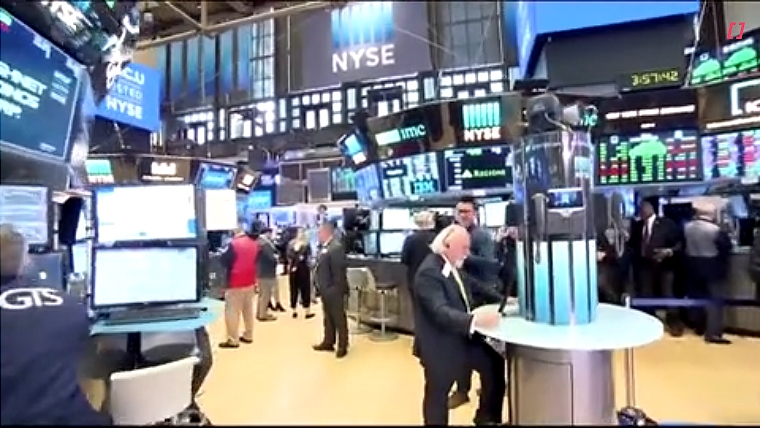
US equity markets gained, and treasury yields retraced from an earlier move higher as investors look ahead to key data on the US labour market. The US dollar was broadly weaker, and the yen advanced to its strongest level since August following hawkish comments by Japanese policy makers. Oil prices were little changed after touching a five-month low earlier in the week with the market unconvinced that OPEC+ production will be sufficient to boost prices.
After the large rally across global asset markets following the US Federal Reserve forecast it would implement 75 bps of cuts next year, focus overnight shifted to rates decisions by major European central banks. Both the European Central Bank (ECB) and Bank of England (BOE) left rates on hold and sounded cautious on the outlook signaling that investor bets on imminent rate cuts may be premature.
The ECB left interest rates unchanged at 4.0% for the second consecutive meeting as expected and didn’t give any indications when it might begin to lower rates. The central bank’s updated quarterly projections show a weaker economy and lower inflation after a temporary increase in coming months. The ECB intends to reduce reinvestments in its PEPP asset purchase programme to €7.5 billion a month over H2 2024 and cease all together at year-end.
In a pushback against rate cut expectations ECB President Lagarde said rate cuts were not discussed at all and policymakers mustn’t get complacent following the recent fall in inflation. A Bloomberg article said that the ‘ECB is largely united on seeing rate cuts later than market bets’ citing sources familiar with their thinking.
The BOE maintained its policy rate at 5.25% which was in line with expectations. The vote split was 6-3 with three committee members still favouring a 25bps hike. The bank kept a tightening bias indicating it will lift rates if inflation remains persistent and outlining that ‘monetary policy needs to be restrictive for some time’. Bank of England Governor Andrew Bailey said ‘there is still some way to go’ in the fight against inflation.
Economic data in the US supported the soft-landing narrative. Retail sales unexpectedly increased in November gaining 0.3% against consensus estimates for a 0.1% decline. Sales excluding autos and gas rose 0.6% on the month which was also above the consensus of 0.2%. Initial jobless claims fell to 202k which was well below expectations for a 220k print.
The positive tone across risk sensitive assets following the FOMC yesterday morning persisted with investors increasingly incorporating the view that inflation will recede without a major economic slowdown. US equities extended the rally with the S&P advancing above 4700. The index is at the highest level since January 2022 and only ~2% below its all-time high.
US treasury yields have continued to extend lower. 2-year yields fell 25bps yesterday, which is the largest daily drop since the collapse of Silicon Valley Bank in March and have fallen a further 7bps overnight. Yields briefly dipped below 4.3% having traded above 4.7% ahead of the FOMC. 10-year yields fell 11bps to 3.91%, the lowest level since June.
The US dollar has fallen a further 1%, as measured by the dollar index, convincingly breaking below the late November low. Amongst the majors, both the Euro and Pound performed strongly against the dollar after the central bank meetings. EUR/USD gained steadily and traded above 1.10. Within G10, the Norwegian Krone was the standout performer. EUR/NOK was down almost 2% after the Norges Bank unexpectedly decided to hike again, increasing rates by 25bps to 4.5%.
NZD/USD struggled to gain traction in offshore trade and oscillated around 0.6220 despite the weaker US dollar backdrop. The NZD is weaker on the European crosses and NZD/AUD is softer having reached lows near 0.9250 before a modest rebound.
NZ fixed interest markets saw large falls in yield in the local session yesterday. 10-year bond yields fell 22bps to 4.57%, the lowest level since July. The initial catalyst was the moves in US treasuries followed by the weaker than expected NZ Q3 GDP. The curve steepened as the market priced in a front-loaded easing cycle by the RBNZ. The first 25bps cut is now priced by May with close to 100bps of cuts priced for 2024.
The last weekly government bond tender for the year saw NZ$1.5 billion in bids for the NZ$500 million nominal bonds on offer. There was strong demand for the 2 lines in the 5-10-year sector and slightly less demand for the 2051 contributing to a further steepening in the 10y/30y curve. There was strong appetite for the NZ$30m Sep-2030 inflation indexed bonds with investors likely attracted by low break-even inflation.
It is a busy economic calendar to end the week. The manufacturing PMI is released in NZ ahead of monthly activity data for China. The PBOC is expected to leave its MLF rate unchanged at 2.5%. PMIs for Europe and the US are released later this evening.

We welcome your comments below. If you are not already registered, please register to comment.
Remember we welcome robust, respectful and insightful debate. We don't welcome abusive or defamatory comments and will de-register those repeatedly making such comments. Our current comment policy is here.